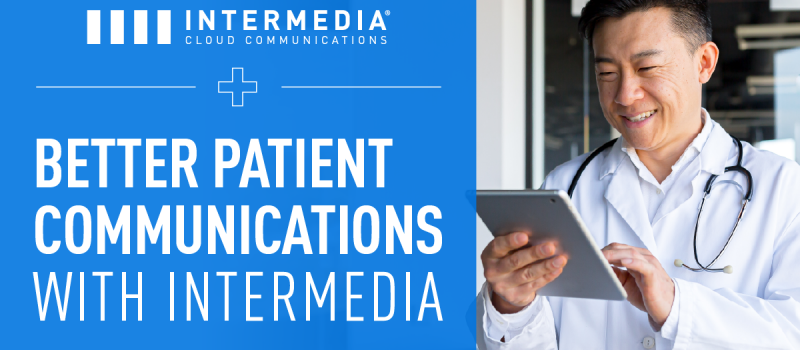Efficient, secure communication is vital in healthcare, whether coordinating care among providers, updating patients, or managing administrative tasks. Outdated tools like pagers, fax machines, and unsecured emails leave room for errors, delays, and compliance violations. That’s why many healthcare organizations are turning to integrated, secure platforms that support real-time communication and collaboration.
A healthcare communication platform offers a centralized way for clinical and non-clinical teams to interact, improving care coordination, reducing miscommunication, and supporting HIPAA compliance. This article explains what these platforms are, what they include, and why they’re essential for modern healthcare delivery.
Quick Takeaways
- Integrating voice, video, messaging, and file sharing in one secure platform eliminates fragmented communication and improves response times.
- Platforms include encryption, access controls, audit logging, secure storage, and signed BAAs to protect PHI across every channel.
- From team huddles to virtual visits, cross-platform access helps clinicians and patients stay connected wherever they are.
- Features like centralized directories, call routing, and EHR integration reduce errors, streamline workflows, and cut down on tool switching.
- Faster communication, fewer delays, and clearer coordination translate to more accurate clinical decisions and improved patient satisfaction.
What Is a Healthcare Communication Platform?
A healthcare communication platform is a secure, unified system that enables real-time communication and collaboration across care teams. These platforms typically combine voice calling, video conferencing, team messaging, file sharing, and contact directories—all designed with privacy and compliance in mind.
Unlike general-purpose communication tools, healthcare communication platforms are tailored to the needs of clinical environments. They allow doctors, nurses, case managers, schedulers, and administrators to exchange critical information quickly—without relying on unsecured text messages, disjointed apps, or outdated technologies.
The goal is simple: better communication means better care.
Key Features of a Modern Healthcare Communication Platform
The most effective healthcare communication platforms include features that directly support clinical workflows and patient-facing operations:
HIPAA-compliant voice and video calls
Encrypted audio and video connections enable providers to consult remotely, conduct virtual visits, and respond to patient concerns in real time.
Secure team messaging
Direct and group chat options allow care teams to share updates, escalate cases, or coordinate logistics, without violating privacy regulations.
Centralized contact directories
Built-in directories make it easy to find and reach specialists, support staff, or department heads by name, title, or role.
Mobile and desktop access
Cross-platform support ensures on-the-go access for field nurses, telehealth teams, and administrative users.
Role-based access controls
Users only see the data and tools relevant to their responsibilities, protecting PHI and reducing security risk.
EHR/EMR integrations
Some platforms integrate with electronic health record systems to surface patient information directly within a conversation or call.
Auto-attendants and call routing
Ideal for patient support lines, these features direct incoming calls to the appropriate staff member or department.
Why Healthcare Organizations Need One
Fragmented communication leads to real-world consequences in healthcare: delayed treatment, missed follow-ups, and unnecessary readmissions. A healthcare communication platform bridges these gaps by connecting the right people at the right time, across departments and facilities.
Key reasons to implement a platform include:
- Faster response during emergencies: Critical updates reach the care team without delays or missed pages.
- Improved staff coordination: Departments stay aligned on schedules, discharge plans, and consult requests.
- Support for hybrid models: Telehealth providers, mobile clinics, and remote administrative teams all rely on cloud-based communication tools.
- Enhanced patient satisfaction: Patients receive quicker callbacks, clearer instructions, and better overall communication.
For organizations looking to modernize operations while maintaining compliance, a healthcare communication platform offers both structure and flexibility.
How a Healthcare Communication Platform Supports Compliance
HIPAA compliance is built into the design of healthcare communication platforms—something generic messaging or calling apps cannot guarantee.
Core compliance features include:
End-to-end encryption
All voice, video, and messaging channels are encrypted in transit and at rest. This ensures that even if data is intercepted, it remains unreadable to unauthorized users.
Access controls and logging
Role-based permissions limit access to PHI, while system logs record user activity for audits. Administrators can monitor usage patterns, detect unusual access, and quickly investigate potential breaches.
Secure storage of messages and files
Conversations and attachments are stored in compliant environments with restricted access. Data is backed up and protected in geographically redundant, HIPAA-certified data centers.
Signed Business Associate Agreements (BAAs)
Reputable vendors provide a BAA, defining their role and responsibilities in protecting your data. This agreement also outlines liability in the event of a breach, reinforcing accountability.
Audit-ready reporting tools
Most platforms offer dashboards and reporting functions to support internal reviews and external inspections. These tools help organizations maintain documentation for HIPAA audits and respond promptly to compliance inquiries.

Benefits for Care Teams and Patients
A healthcare communication platform delivers measurable value for everyone involved in patient care.
For Care Teams
- Faster decision-making: Doctors can consult with specialists immediately. No need to wait for callbacks or email replies.
- Reduced staff burnout: Clearer workflows, fewer missed messages, and less time spent switching between apps lead to lower frustration.
- Fewer communication breakdowns: Everything from shift handoffs to urgent lab results can be managed in one secure channel.
For Patients
- Shorter wait times and faster service: Patients benefit from more coordinated scheduling and care delivery.
- Better understanding of treatment plans: Clearer communication helps patients follow through with instructions and medications.
Stronger relationships with providers: When patients feel heard and supported, satisfaction and trust increase.

What to Look for in a Platform
Not all communication tools meet the rigorous needs of healthcare organizations. When evaluating vendors, ask:
- Is it HIPAA compliant with encryption, logging, and access controls?
- Does it integrate with our existing EHR, scheduling, or CRM systems?
- Is the platform easy to use across desktop and mobile?
- Does it scale across multiple departments or facilities?
- Will the vendor sign a BAA and provide ongoing compliance support?
- What kind of training and technical support are available?
Choosing a platform with these features ensures long-term value and reduces risk as your organization grows.
Power Smarter Communication Today with Intermedia
The right healthcare communication platform transforms how care teams connect, collaborate, and serve patients. It replaces fragmented workflows with secure, streamlined communication that supports clinical outcomes and operational efficiency.
In a time when speed, security, and coordination are critical, healthcare organizations can’t afford to rely on legacy tools or unsecured apps. A modern communication platform lays the foundation for better care and stronger compliance.
Want to improve care coordination and patient communication? Explore how Intermedia’s secure, cloud-based communication solutions are designed to support the unique needs of healthcare organizations. Request a demo today.
August 15, 2025
Explore other posts on these topics: Healthcare




